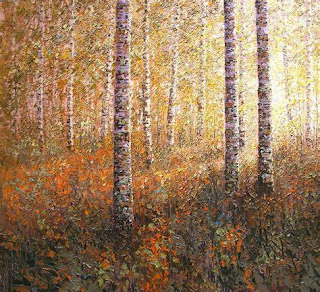The art of Dmitry Kustanovich (1970-) brings to mind the techniques of Van Gogh, as a Post-Impressionist with his use of impasto to create a 3-D effect. Yet, there's also the melding with Pointillism more reminiscent of Seurat or Signac with their daubs. Add to all that, a dynamic sense of movement or immediacy and you have a skilled contemporary artist.
A Belarusian by birth, Kustanovich trained in art in his homeland and in Russia. He currently lives in St. Petersburg, where in 2009, he opened the Kustanovich's Gallery as a cultural center. There, evening events include music, creative expression and the artist himself teaching master classes in art.
Getting back to his technique, he is considered to be an originator of not only the amalgam of techniques, but also to accomplish them using palette knives instead of brushes. As he states on why he prefers palette knives, his reply is:
I model the space with the palette knife expressing its to-day state, its momentous, its current minute. This is my technique. It is emotional. It has its own philosophy. The world expressed through it is manifolded. It is different.
All of his originality, combined with recognizable techniques and subjects means that 100 galleries have featured his works over the past 30 years... even in his flora!


























